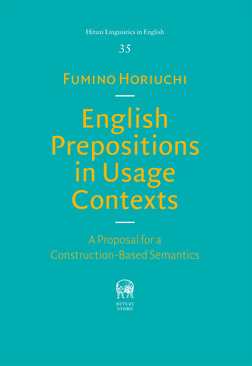內容簡介
內容簡介 語の意味とは何か。構文的なパターンは言語使用の中からどのように形成されるのか。これらの問いに迫るため、本書では、英語前置詞の振る舞いを大規模コーパスや親子会話のデータを用いて分析し、前置詞を含む構文的なパターンが使用文脈の中で創発・定着するプロセスを、認知、談話、相互行為の観点から解明する。分析の帰結として、意味を担う基本単位は単一の語より大きな構文的単位であるという「構文的意味論」を提唱する。 AcknowledgmentsCHAPTER I Introduction1.1 Background and Scope of this Study1.2 Why Prepositions?1.3 Outline of the StudyPART I Theoretical Background and Previous Studies: Cognitive Linguistics and the Usage-based Approach to English PrepositionsCHAPTER II Theoretical Framework2.1 Introduction2.2 The Symbolic View of Language2.3 Continuum of Lexicon and Grammar2.4 The Construction as a Unit Learned and Accessed as a Whole2.5 The Cognitive and Embodied Basis of Language2.6 The Usage-Based Approach2.6.1 Cognitive Grammar as Usage-Based Theory2.6.2 The Role of Frequency2.6.2.1 Frequency as a Source of Forming Chunks2.6.2.2 Relations between Words2.6.2.3 Relations between Words and Constructions2.6.2.4 Relations between Words Constructions and Discourse Type2.6.3 Usage-Based Approach to Language Acquisition2.7 SummaryCHAPTER III Previous Studies of English Prepositions3.1 Introduction3.2 Classical Views of Linguistic Polysemy3.3 Prototype Approach to Categorization3.4 Cognitive Linguistics Approach to English Prepositions3.4.1 Analysis Based on Image-schemas3.4.2 Elaborated Analysis through Comparison of Related Words3.5 Problems of Previous Studies and the Goa
